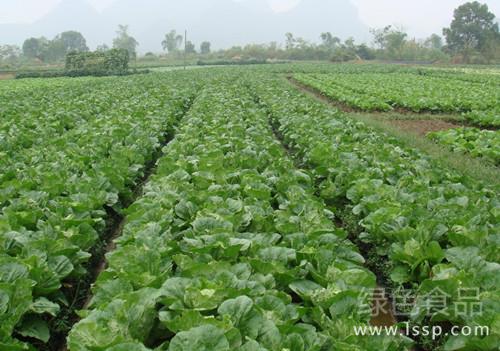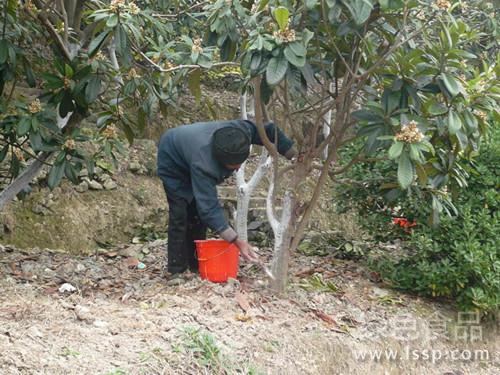Malformed Potato affects Commodity how to reduce the deformed rate of Potato
Abnormal potato often occurs in the process of tuber growth, especially in spring cultivation in the second season, because of high temperature and drought, the ratio of abnormal potato is high, which seriously affects the commerciality of potato and reduces the planting benefit of potato. The causes and control measures of potato malformation are introduced as follows, for reference only.

Malformed potato
1. The cause of malformed potato:
Malformed potato is mainly caused by secondary growth. The main reason for secondary growth is sudden rainfall or watering after high temperature and drought, which makes the tuber that stopped growing under suitable growth conditions, but at this time, the tuber epidermis is partially or completely aged, while the buds without aging resume growth and starch synthesis, thus forming a variety of deformed potatoes.
2. Prevention and control measures:
(1) selection of excellent varieties:
Malformed potatoes often occur in mid-mature or mid-late-maturing potato varieties, so when planting, they are on poor drainage or heavy soil, or do not have watering conditions, and the potato growing period is in the area of high temperature and little rain. Potato varieties that are not easy to have secondary growth should be selected according to local conditions.
(2) increase the application of organic fertilizer:
Organic fertilizer contains all kinds of elements needed for potato growth. the application of organic fertilizer can make the soil loose and fertile, improve soil aeration conditions, improve soil water and fertility, avoid potato deformity caused by too dry and wet soil, and make tuber expand at the same time. Make the tuber shape neat, the skin smooth, and the yield increased. In particular, potatoes planted on clayey soil should apply more organic fertilizer to improve soil conditions. Organic fertilizer is generally used as base fertilizer, and requires deep application, ordinary fertility plots apply 4000kg to 5000kg per mu.
(3) appropriate amount of fertilization:
Excessive fertilization of potato can easily lead to exuberant growth and even long growth. If the corresponding cultivation measures do not keep up in time, it will inhibit the expansion of tubers and lead to deformities. Potato needs potassium, which absorbs the most potassium, followed by nitrogen and phosphorus. Fertilizer can be applied in two ways: base fertilizer and topdressing, which is mainly organic fertilizer and nitrogen fertilizer in the early stage, in order to promote the rapid growth of aboveground stems and leaves of potato, generally topdressing urea 10kg / mu or ammonium bicarbonate 40kg / mu. Topdressing twice in the whole growth period, the number and times of topdressing depends on soil fertility and potato growth, excessive fertilization is strictly prohibited. In order to promote tuber growth during tuber forming period, some potassium fertilizer can be added appropriately, foliar spraying method is adopted, and potassium dihydrogen phosphate with a concentration of 1 ‰ is generally used.
(4) timely watering:
Potato seedlings generally do not need watering, when the soil is too dry, it must be watered, but after watering, ploughing should be done in time to break the consolidation and improve the soil temperature. After budding, potatoes should be watered frequently according to soil moisture to ensure that the soil is moist and the land is not dry, usually watered once every 7 to 10 days. According to the soil condition, stop watering 5-7 days before harvest, which is beneficial to the storage of potatoes after harvest. To avoid drought in the growing period, especially in the tuber expansion period, watering after drought will cause the secondary growth of tubers to form deformities.
(5) strengthen the cultivation of soil in the middle of ploughing:
The function of ploughing and soil cultivation is to improve soil ventilation, increase soil moisture and fertilizer conservation capacity, make potato skin smooth, potato shape neat, and reduce the rate of deformity. According to the situation, the whole growth period of potato needs 2 to 3 times of mid-tillage and 2 times of soil cultivation. Three to five days before emergence, the first intertillage was done; after the seedlings came out, the second intertillage was completed, and the last intertillage was completed before the potato ridge was sealed. In the budding stage, when the tip of the stolon begins to expand, the soil is cultivated for the first time to prevent the stolon from escaping from the ground to become a new branch, and the potato enters the peak stage of expansion. In order to prevent the tuber from exposing to the ground, it is necessary to cultivate the soil for the second time, to cultivate the soil thick 4~5cm, to form a high ridge with a height of about 25cm, no watering, no hardening on the ridge, and good soil permeability, which is beneficial to the expansion of the tuber.
- Prev

Control methods of black spot of Chinese cabbage with halo on long brown leaf spot
Control methods of black spot of Chinese cabbage with halo on long brown leaf spot
- Next

To ensure the high quality and high yield of loquat, do a good job of anti-freezing of Dake loquat.
To ensure the high quality and high yield of loquat, do a good job of anti-freezing of Dake loquat.
Related
- Fuxing push coffee new agricultural production and marketing class: lack of small-scale processing plants
- Jujube rice field leisure farm deep ploughing Yilan for five years to create a space for organic food and play
- Nongyu Farm-A trial of organic papaya for brave women with advanced technology
- Four points for attention in the prevention and control of diseases and insect pests of edible fungi
- How to add nutrient solution to Edible Fungi
- Is there any good way to control edible fungus mites?
- Open Inoculation Technology of Edible Fungi
- Is there any clever way to use fertilizer for edible fungus in winter?
- What agents are used to kill the pathogens of edible fungi in the mushroom shed?
- Rapid drying of Edible Fungi

